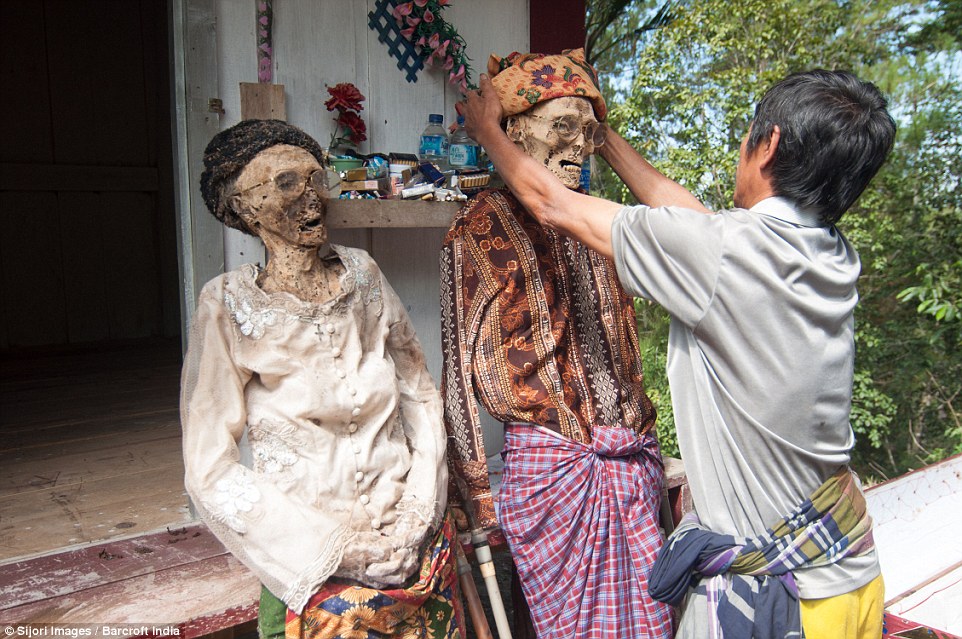
I know it’s not unusual to have trouble letting our loved ones go when they pass away, but this seems to be taking it a bit far.
The Indonesian people known as the Toraja have a yearly ritual called MaiNene, translated as “The Ceremony of Cleaning Corpses” where every August families dig up the bodies of their dead relatives, wash them, groom them, put them in fancy new clothes, and walk them around their villages. According to their belief system, a polytheistic animistic religion called aluk, or The Way, they believe that death doesn’t happen suddenly, so much as it is an extended process as the souls gradually work towards the afterlife (Puya). If a person was killed away from home, the family will go to the location they died and walk the corpse all the way back to their village to help as part of their progression towards Puya. The yearly ritual is because they believe once a year the souls must return to their home village…and who wants to wake up in a coffin with the same clothes you’ve been wearing for the past year?
The Toraja have many elaborate rituals involving death, from extensive death feasts (normally just for noblemen) that can last days and attract thousands, to a gigantic water buffalo slaughter (where children catch their spurting blood in bamboo tubes), to elaborate hanging graveyards where colorful corpses decorate the faces of cliffs.
Death is the great mystery and every culture seems to have its own set of rituals (or many different rituals) to honor the passing of their loved ones. The Toraja seem to make us all look overly succinct (except maybe the ancient Egyptians) when it comes to lengthy, elaborate ritualism. To be fair to them, they used to also have lengthy, elaborate life rituals, but they have diminished since non-members of their religion were prohibited from attending the life rituals (but not the death ones) and Dutch missionaries converted a lot of the locals to Christianity. Which is a whole ‘nuther discussion.
You can go see all of this for yourself. Ever since a National Geographic special covering the funeral of a rich nobleman in 1976 and a museum tour in North America of Torajan art, the area has become a huge tourist attraction for folks who’ve been to Bali and want to see more of the ‘primitive and wild’ Indonesia. There was even a cycling tour through it in 2012. Maybe not as ‘primitive and wild’ as it once was, but Tana Toraja is still unlike anywhere else on Earth.



